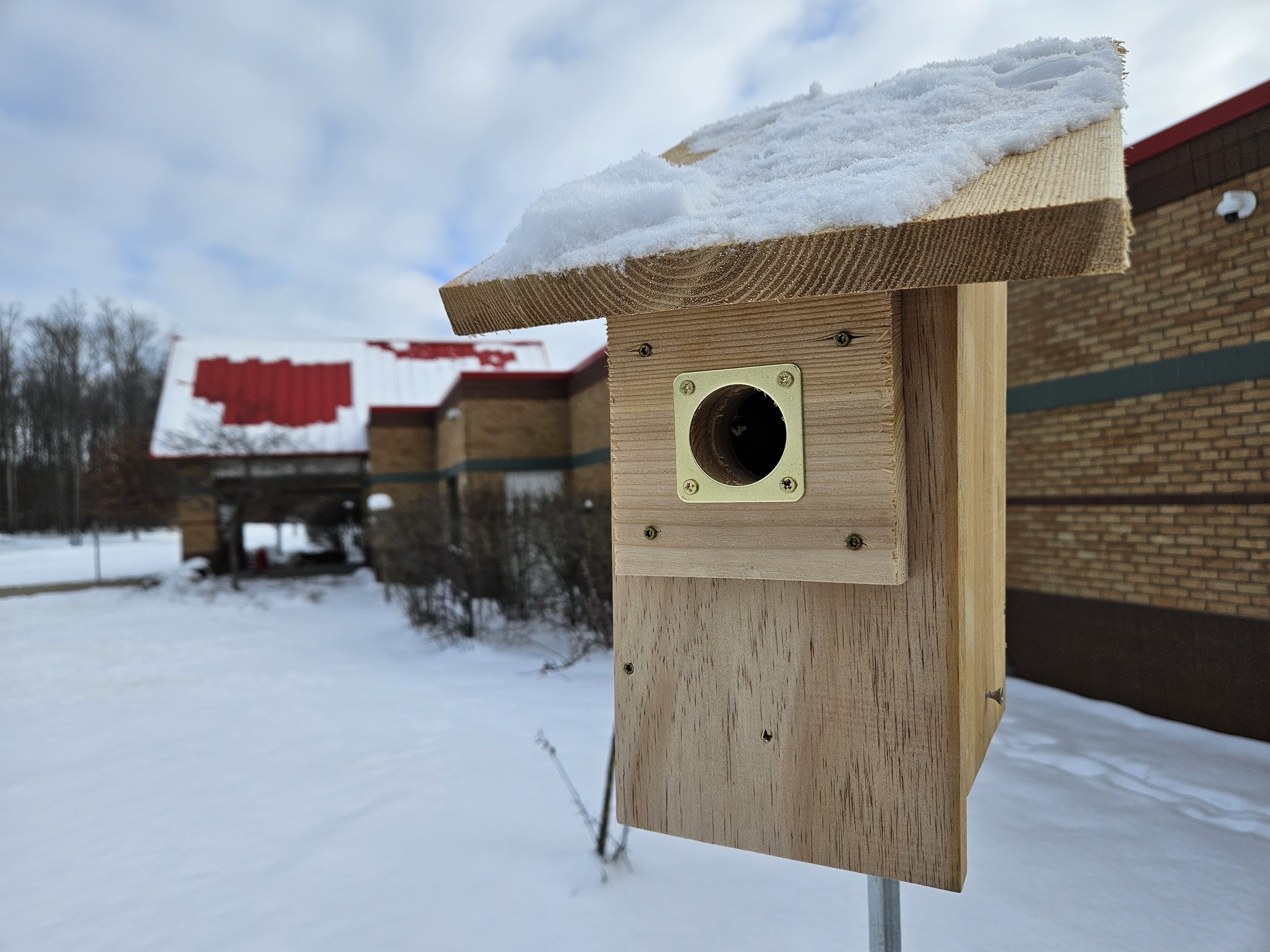
These bluebird boxes have been strategically placed near local schools, adjacent to prime bluebird habitat, providing a safe and supportive environment for the birds to flourish in areas previously impacted by development.
Bluebird Nest Live: A Window into Nature
During installation, several classroom presentations were conducted so students would learn about the bluebirds as well as the importance of their habitat and general conservation.
Sponsor a bluebird box
This project is ongoing, and we will be looking to add additional bluebird boxes to the region, specifically through school partnerships. If you are interested in sponsoring a bluebird box for $250.00 USD, follow the donation button and specify that you’d like to support this program in the comments.
Providing nesting habitat for local bluebirds
Eastern bluebirds are small, colorful birds admired for their natural beauty. Males display vibrant blue feathers with orange-brown chests, while females have softer gray-blue hues. Found throughout eastern North America, including Michigan, they inhabit open areas like grasslands and meadows, nesting in tree cavities, wooden fences, or birdhouses. These birds perch on wires and posts near their nests. Eastern bluebirds forage for insects such as caterpillars, beetles, and spiders, but switch to fruit and berries in winter. They face predators like cats, snakes, and raccoons, and compete for nesting space with species like House Sparrows and European Starlings. Known for their low-toned, warbling songs and soft whistle-like calls, their vocalizations play a key role in breeding and communication.
Sleeping Bear Wildlife Fund is working to provide additional nesting space for these animals by creating specially designed houses that were deployed among three schools in Benzie County to allow students to connect with the species.
Students are taught about how to maintain the next boxes for the spring as well as how the bluebirds locate proper nesting areas to raise their chicks.
Each of the bluebird boxes contain a special camera that is connected to each school to allow students to get an inside view of the bird houses, allowing students to connect to the natural history and life cycle of the blue bird boxes. These cameras coincide with lesson plans that were developed by Sleeping Bear Wildlife Fund that teachers will deliver over the course of the nesting season.
Protecting Blue Birds
Bluebirds are important animals to the biodiversity of Michigan’s Northern Lower Peninsula. To learn more about bluebirds, visit our Native Species Database.
This research is generously supported by and done in partnership with the Benzie Audubon Club




